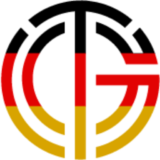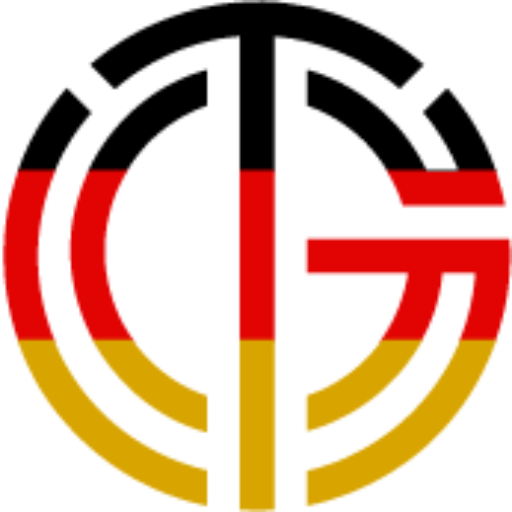Blog
Ray Ross Ray Ross
0 Course Enrolled • 0 Course CompletedBiography
CDCS최신업데이트시험덤프, CDCS시험대비최신덤프공부자료
Pass4Test의EXIN인증 CDCS시험덤프 공부가이드는 시장에서 가장 최신버전이자 최고의 품질을 지닌 시험공부자료입니다.IT업계에 종사중이라면 IT자격증취득을 승진이나 연봉협상의 수단으로 간주하고 자격증취득을 공을 들여야 합니다.회사다니면서 공부까지 하려면 몸이 힘들어 스트레스가 많이 쌓인다는것을 헤아려주는Pass4Test가 IT인증자격증에 도전하는데 성공하도록EXIN인증 CDCS시험대비덤프를 제공해드립니다.
EXIN CDCS 시험요강:
| 주제 | 소개 |
|---|---|
| 주제 1 |
|
| 주제 2 |
|
| 주제 3 |
|
높은 통과율 CDCS최신 업데이트 시험덤프 덤프는 시험패스의 가장좋은 공부자료
Pass4Test 는 여러분의 it전문가 꿈을 이루어드리는 사이트 입다. Pass4Test는 여러분이 우리 자료로 관심 가는 인중시험에 응시하여 안전하게 자격증을 취득할 수 있도록 도와드립니다. 아직도EXIN CDCS인증시험으로 고민하시고 계십니까?EXIN CDCS인증시험가이드를 사용하실 생각은 없나요? Pass4Test는 여러분에 편리를 드릴 수 잇습니다. Pass4Test의 자료는 시험대비최고의 덤프로 시험패스는 문제없습니다. Pass4Test의 각종인증시험자료는 모두기출문제와 같은 것으로 덤프보고 시험패스는 문제없습니다. Pass4Test의 퍼펙트한 덤프인 M crosoftCDCS인증시험자료의 문제와 답만 열심히 공부하면 여러분은 완전 안전히EXIN CDCS인증자격증을 취득하실 수 있습니다.
최신 EPI Data Centre CDCS 무료샘플문제 (Q15-Q20):
질문 # 15
What mainly affects the cooling capacity of a raised floor tile?
- A. Percentage of the surface opening, obstruction of the supporting construction, pressure under the raised floor, damper construction
- B. Percentage of the surface opening, airflow direction of the ICT equipment, temperature difference between the air intake and air exhaust of the ICT equipment, construction material of the tile
- C. Relative humidity in the computer room, temperature of the cold air, pressure under the raised floor, construction material of the tile
- D. Type of ICT equipment, location of the air conditioner, pressure under the raised floor, allowable temperature in the hot aisle
정답:A
설명:
The cooling capacity of a raised floor tile is primarily influenced by the percentage of surface opening, the obstruction caused by the supporting construction, the pressure under the raised floor, and the damper construction. These factors dictate how much airflow can pass through the tile and how effectively cool air is distributed to the equipment in the data center.
Detailed Explanation:
The percentage of surface opening on a floor tile affects how much air can flow through, with larger openings allowing more airflow. Supporting structures beneath the floor can obstruct airflow, reducing cooling efficiency. Pressure under the raised floor impacts the velocity and volume of air that moves through the tile. Additionally, if dampers are installed, they control the airflow rate, which can be adjusted to meet specific cooling needs for the area.
EPI Data Center Specialist References:
EPI guidance on airflow management under raised floors emphasizes these factors as critical for effective cooling, especially in high-density areas. Ensuring unobstructed and adequate airflow helps maintain consistent cooling across equipment.
질문 # 16
You need to determine the strategy for the cooling audit. All the servers are based on a front-to-rear (F-R) airflow design.
Which location for the temperature/humidity measurement should you recommend for the audit?
- A. At the back/rear of the server at 50 mm/2 inch
- B. At 1.5 meters/5 feet above the floor in the middle of the cold aisle
- C. At 1.5 meters/5 feet above the floor in the middle of the hot aisle
- D. At the front/intake of the server at 50 mm/2 inch
정답:D
설명:
For a cooling audit in a data center, it is essential to measure temperature and humidity where air enters the servers to accurately assess cooling performance. In this case, since all servers have a front-to-rear (F-R) airflow design, measuring at the front/intake of the server will provide a precise understanding of the cooling conditions that the equipment is experiencing.
Detailed Explanation:
Servers with a front-to-rear airflow design draw in cool air from the cold aisle at the front, which is then exhausted into the hot aisle at the rear. By measuring temperature and humidity 50 mm/2 inches from the front intake, you gather data on the air conditions right before it enters the servers, providing an accurate representation of the cooling environment as it directly impacts the equipment.
Measuring in the cold aisle at the front intake ensures that the readings reflect the actual conditions of the incoming air that the servers depend on for effective cooling. This approach is consistent with best practices for maintaining thermal conditions in a data center, as it helps confirm that the cooling systems are delivering air within the required temperature and humidity specifications.
EPI Data Center Specialist References:
According to the EPI Data Center Specialist curriculum, the optimal placement for temperature and humidity sensors is at the intake of the equipment in the cold aisle, as it directly correlates to the environmental conditions affecting the servers. This positioning allows for a more effective audit of cooling performance, which is critical for maintaining the reliability and efficiency of the data center's operations.
질문 # 17
Three data centers are benchmarked on facilities energy efficiency.
Data center A has achieved a PUE of 2.45.
Data center B has achieved a PUE of 1.20.
Data center C has achieved a PUE of 1.90.
Which of the data centers is operating at the highest facility efficiency?
- A. Data center C
- B. Data center B
- C. PUE does not indicate efficiency
- D. Data center A
정답:D
설명:
A Power Usage Effectiveness (PUE) of 1.20 (achieved by Data Center B) indicates the highest facility efficiency among the three data centers. A lower PUE value signifies better energy efficiency, as it means that a greater proportion of the total energy consumed is used directly for IT equipment rather than for cooling, lighting, or other facility needs.
Detailed Explanation:
PUE is calculated as the ratio of total facility energy to IT equipment energy. A PUE close to 1.0 suggests that almost all the energy is dedicated to computing processes, with minimal overhead. With PUE values of 2.45, 1.20, and 1.90, Data Center B (1.20) operates most efficiently by devoting a higher percentage of its total energy to IT equipment.
EPI Data Center Specialist References:
The EPI curriculum emphasizes PUE as a key metric for data center efficiency, with lower values representing better performance. Achieving a PUE near 1.0 aligns with industry best practices for energy-efficient data center design and operation.
질문 # 18
What is a potential disadvantage of using water mist as a fire extinguishing system?
- A. It will rapidly increase the humidity level in the data center, which can cause a potential risk for the operation of the equipment
- B. It has droplets that are too small (100-120 microns) so it can only be used for small fires
- C. It extracts oxygen from the air creating a potential risk for humans inside the computer room
- D. It only uses 10% of the water normally used in a water-based fire suppression, which might not be enough to suppress the fire
정답:A
설명:
A potential disadvantage of using a water mist fire suppression system is that it can rapidly increase the humidity within the data center, which may pose risks to sensitive electronic equipment. Excessive humidity can lead to condensation, which could damage electronics and lead to short circuits or corrosion over time.
Detailed Explanation:
Water mist systems use fine droplets to suppress fires by cooling and displacing heat. However, the moisture generated may raise the humidity level to the point where it exceeds safe operational limits for IT equipment. Therefore, while water mist systems are effective in fire suppression, they may not be ideal in environments where high humidity could damage sensitive equipment.
EPI Data Center Specialist References:
EPI guidelines advise considering the impact of humidity from fire suppression systems, particularly in environments housing electronic equipment. It's essential to weigh the benefits of fire suppression against potential risks to operational equipment when choosing suppression methods.
질문 # 19
You are allowed to use a calculator for this question. The total power consumption of the ICT equipment in a rack is 6 kW. The equipment is traditional ICT equipment with a Delta-T of approximately 11 °C / 20 °F. Calculate the approximate CFM required to cool the equipment in the rack.
- A. Approximately 500 CFM
- B. Approximately 1,500 CFM
- C. Approximately 160 CFM
- D. Approximately 1,000 CFM
정답:D
설명:
To calculate the cooling airflow requirement for ICT equipment, you can use the formula:
CFM=Power (kW)×3160ΔT(°F) ext{CFM} = rac{ ext{Power (kW)} imes 3160}{Delta T ( ext{°F})}CFM=ΔT(°F)Power (kW)×3160 For equipment consuming 6 kW with a Delta-T of 20°F:
CFM=6×316020=948≈1,000 CFM ext{CFM} = rac{6 imes 3160}{20} = 948 approx 1,000 , ext{CFM}CFM=206×3160=948≈1,000CFM Detailed Explanation:
This formula provides an estimate of the cubic feet per minute (CFM) of air required to cool the equipment based on its power consumption and the temperature difference (Delta-T) between intake and exhaust. The Delta-T represents the cooling effectiveness of the airflow.
EPI Data Center Specialist References:
EPI recommends using this calculation for determining airflow requirements in data centers, ensuring that cooling systems are adequately sized to maintain equipment within safe temperature limits.
질문 # 20
......
EXIN인증CDCS시험은 IT인증시험과목중 가장 인기있는 시험입니다. Pass4Test에서는EXIN인증CDCS시험에 대비한 공부가이드를 발췌하여 IT인사들의 시험공부 고민을 덜어드립니다. Pass4Test에서 발췌한 EXIN인증CDCS덤프는 실제시험의 모든 범위를 커버하고 있고 모든 시험유형이 포함되어 있어 시험준비 공부의 완벽한 선택입니다.
CDCS시험대비 최신 덤프공부자료: https://www.pass4test.net/CDCS.html
- CDCS퍼펙트 공부 🥗 CDCS퍼펙트 최신버전 문제 🤱 CDCS적중율 높은 시험덤프자료 🦦 검색만 하면➽ kr.fast2test.com 🢪에서➠ CDCS 🠰무료 다운로드CDCS시험내용
- 시험패스에 유효한 CDCS최신 업데이트 시험덤프 최신버전 자료 💁 ➽ www.itdumpskr.com 🢪을 통해 쉽게✔ CDCS ️✔️무료 다운로드 받기CDCS시험유형
- 시험패스에 유효한 CDCS최신 업데이트 시험덤프 최신버전 자료 🚌 「 www.koreadumps.com 」에서《 CDCS 》를 검색하고 무료로 다운로드하세요CDCS퍼펙트 공부
- 시험준비에 가장 좋은 CDCS최신 업데이트 시험덤프 최신버전 덤프 🦡 오픈 웹 사이트☀ www.itdumpskr.com ️☀️검색➠ CDCS 🠰무료 다운로드CDCS시험대비
- CDCS최신 시험 예상문제모음 🍿 CDCS최신 시험 예상문제모음 🃏 CDCS최신 시험 예상문제모음 📜 ✔ www.koreadumps.com ️✔️에서➤ CDCS ⮘를 검색하고 무료로 다운로드하세요CDCS인증덤프공부
- 시험준비에 가장 좋은 CDCS최신 업데이트 시험덤프 최신버전 덤프 💔 지금⮆ www.itdumpskr.com ⮄을(를) 열고 무료 다운로드를 위해➠ CDCS 🠰를 검색하십시오CDCS시험대비 최신버전 공부자료
- 시험준비에 가장 좋은 CDCS최신 업데이트 시험덤프 최신버전 덤프샘플문제 다운로드 🦞 지금➡ www.itexamdump.com ️⬅️에서{ CDCS }를 검색하고 무료로 다운로드하세요CDCS최고덤프데모
- CDCS최신 업데이트 시험덤프 기출문제 🦠 무료 다운로드를 위해➤ CDCS ⮘를 검색하려면➥ www.itdumpskr.com 🡄을(를) 입력하십시오CDCS최신 시험 예상문제모음
- CDCS최신 업데이트 시험덤프 기출문제 🎥 ▷ www.dumptop.com ◁을(를) 열고「 CDCS 」를 검색하여 시험 자료를 무료로 다운로드하십시오CDCS퍼펙트 최신버전 문제
- CDCS최신 업데이트 시험덤프 최신 인기시험 공부자료 🌈 ( www.itdumpskr.com )을(를) 열고( CDCS )를 검색하여 시험 자료를 무료로 다운로드하십시오CDCS시험유형
- CDCS인증덤프공부 🙊 CDCS높은 통과율 덤프샘플 다운 ✡ CDCS인증덤프공부 🎍 검색만 하면➥ www.koreadumps.com 🡄에서▷ CDCS ◁무료 다운로드CDCS적중율 높은 시험덤프공부
- CDCS Exam Questions
- training.lightoftruthcenter.org app.iamworkable.net www.dahhsinmedia.com cpdinone.com course.parasjaindev.com rungc.com.au elearning.centrostudisapere.com programmercepat.com learn-school.webtemplates.in learnruqyah.net

